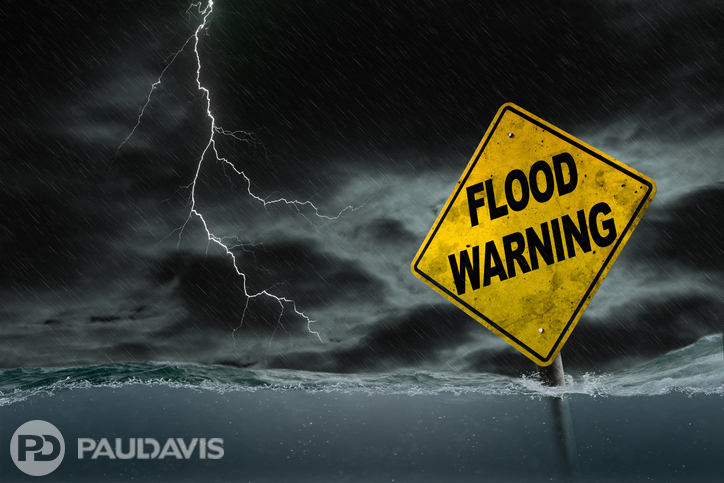
Floods are the most common natural disaster in Canada, ringing up billions in losses over the last 10 years. The Munk School of Global Affairs in Toronto recently found that flooding is more costly to Canadians than fire and theft, and the threat is rising rapidly as the climate changes. It behooves every commercial property owner to prepare for the deluge.
“We recommend that property owners consider two methods of preparation: wet floodproofing and dry floodproofing,” says Leslie Anderson, Vice President of Training for Paul Davis. “Not only is the first type very successful, it’s also faster and more economical to implement. The second can require extensive effort and expense but it affords the highest level of protection.”
Preventative Flooding Measures - Part 1
These measures don't prevent floods from entering properties but safeguards critical areas. Implementing this approach typically addresses five areas:
- Strengthening walls and barriers between wet and dry areas, to allow dry areas to withstand water pressure.
- Installing flood-proof doors.
- Maintaining spare parts for critical equipment and storing them away from flood-prone areas.
- Raising critical equipment - electrical connections, mechanical systems, fuel and life safety systems - to higher floors or elevated platforms.
- Creating emergency plans that spell out actions to take if floods threaten, such as moving vehicle fleets and relocating expensive inventory.
Preventative Flooding Measures - Part 2
These measures aim to prevent floodwaters from entering properties. While it’s the most expensive and time-consuming approach, this method maintains structures in their present state and reduces repair needs if floods do occur. Dry floodproofing often requires professional assistance to address four areas:
- Sealing all openings in exterior structural walls – windows, doors, utility entries and vents
- Waterproofing outside walls.
- Creating drainage systems inside and under the structure to guide water away from the building’s foundation.
- Building berms, levees, embankments or drainage paths around the perimeter of the structure to block floodwaters before they reach the property.
Ready to evaluate your property for floodproofing options? Call Paul Davis today at 844.215.7898 to discuss a comprehensive range of emergency disaster planning assistance.
